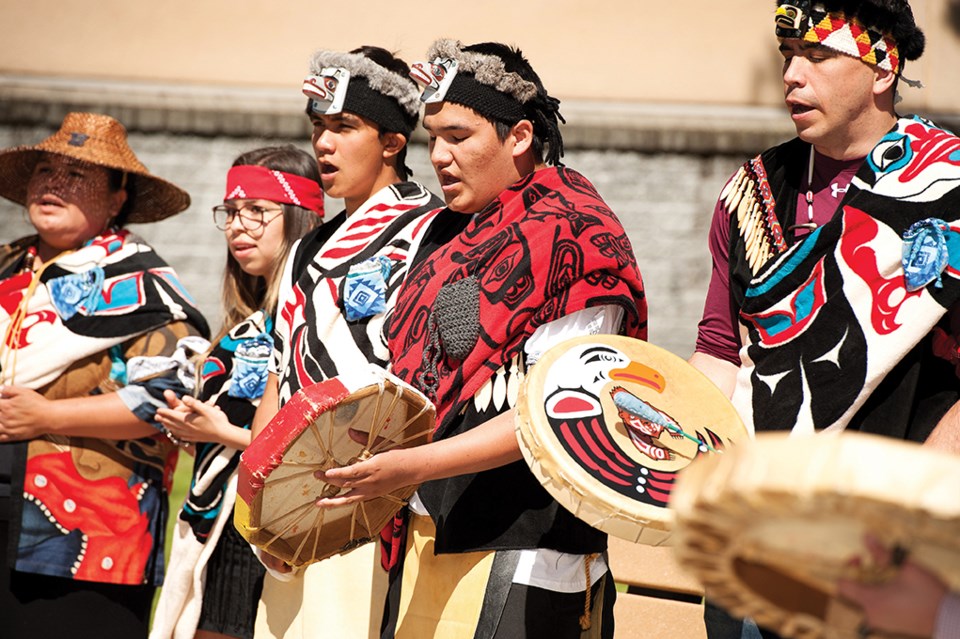As the rhythmic beat of drums grew louder, a group of aboriginal students from Squamish took a moment to reflect on issues that affect indigenous people today.
At the top of their minds were environmental change in B.C. and local language revitalization – the two themes of this year’s 24-Hour Drum put on by the Sea to Sky Aboriginal Youth Leadership group.
The Squamish students from Howe Sound Secondary, Don Ross Secondary and Learning Expeditions joined other aboriginal students from throughout the corridor at Whistler Secondary School on Friday to take part in the fourth annual event.
Skwxwú7mesh and Lil’wat Nations’ flags were raised to mark their shared territory and the beginning of the 24-Hour Drum. The students shared what they had learned about the importance of revitalizing indigenous languages, including Skwxwú7mesh, one of 11 Coast Salish languages in the area between the Fraser Valley, Central Coast, Vancouver Island and Puget Sound.
“In Squamish, there aren’t a lot of people who speak Skwxwú7mesh fluently, but people are working hard towards this,” said Ashleigh Giffen, a Grade 12 student and First Nations representative on Howe Sound Secondary’s student council.
She is applying what she has learned about the Squamish language to study the language spoken by Prairie Cree in Saskatchewan, the community that was the original home to her family.
“I’ve lived in Squamish my whole life, and it’s great because they’ve taken me in as an indigenous person, even if it’s not my own nation,” said Giffen.
Around 60 students from the Sea to Sky Aboriginal Leadership group presented projects on the environment and language revitalization to family, friends and the greater community through spoken word, poetry, film and art.
Giffen’s project was on the possible effects of the proposed Garibaldi at Squamish ski resort, a $3.5 billion project that was given provincial environmental approval in January. The resort, which would include ski lifts and runs and multi-purpose hiking and biking trails, would be complete in 20 years.
“I did a video of what’s at stake if all the land gets developed,” said Giffen, who hiked up to the proposed location 15 kilometres north of Squamish on Brohm Ridge.
Her classmates completed projects on the negative affects the ski resort would have on local bears and salmon.
Other presentations included the environmental effects of B.C.’s LNG industry.
During the ceremony, the students heard the stories of aboriginal elders who were born at Green Lake, the largest lake in Whistler. They then spent the night at Whistler Secondary to learn more about their heritage.
All proceeds of the 24-Hour Drum were donated to Res’eau Waternet Project, which provides clean drinking water to small aboriginal communities in B.C., including Lytton First Nation and Lhoosk›uz Dené Nation.
The nations are often located in isolated rural areas.
“A group of UBC engineers is using a community circle approach to problem solve how to provide clean water to these communities,” said Susan Leslie, district principal for aboriginal education, adding the community circle approach combines traditional, cultural and scientific knowledge.
“We chose it because it’s a great initiative that helps a lot of people.”



